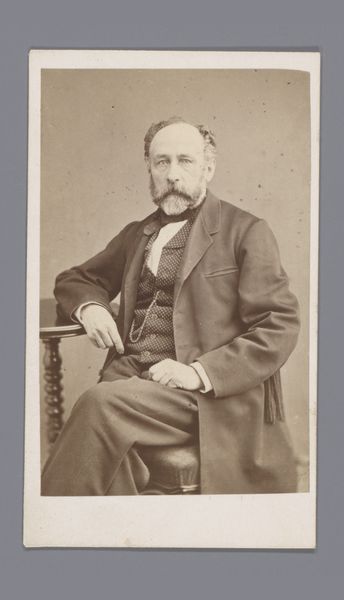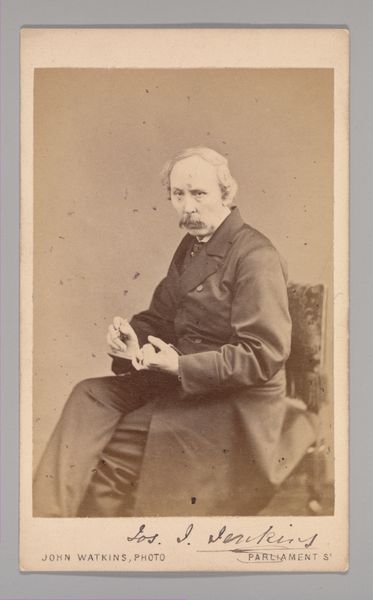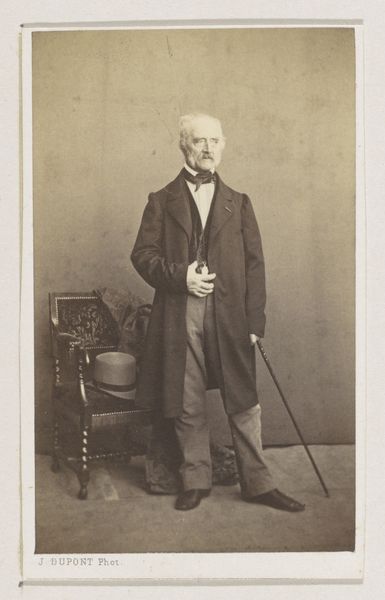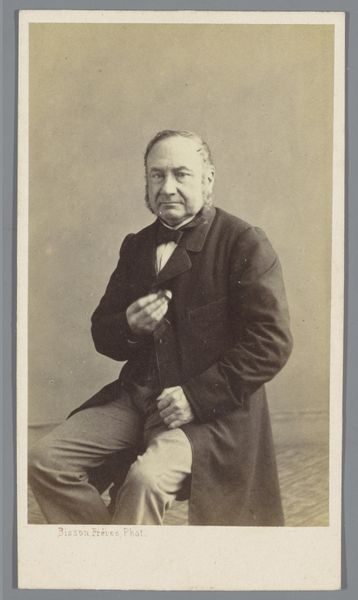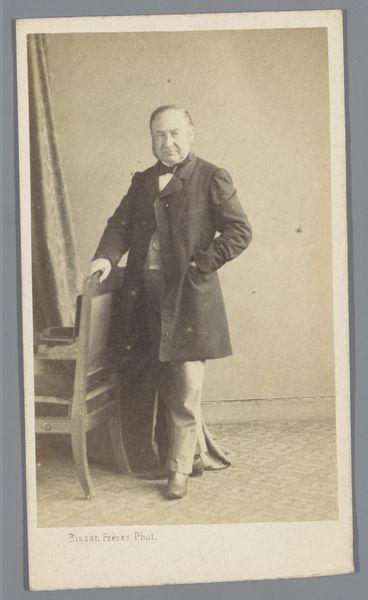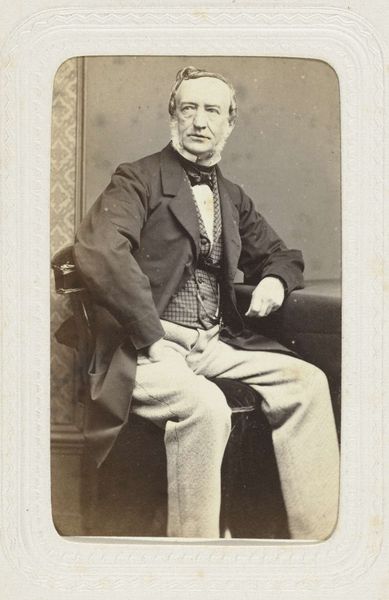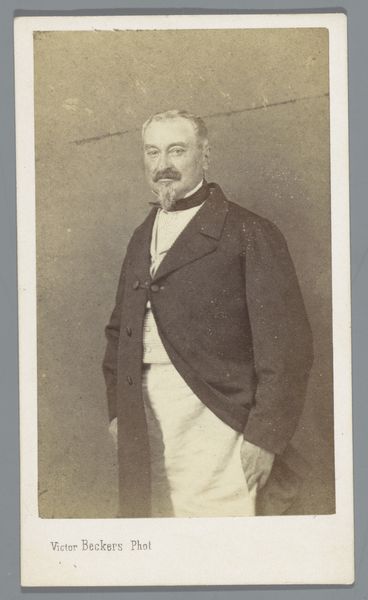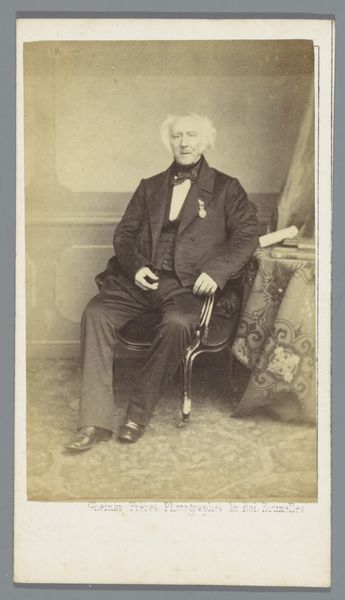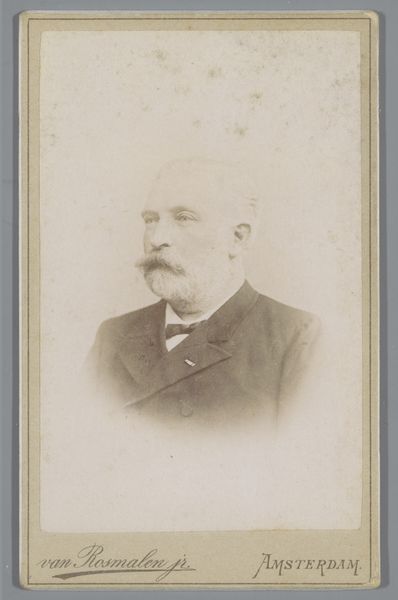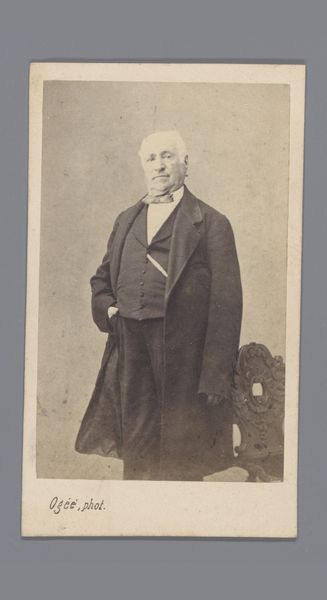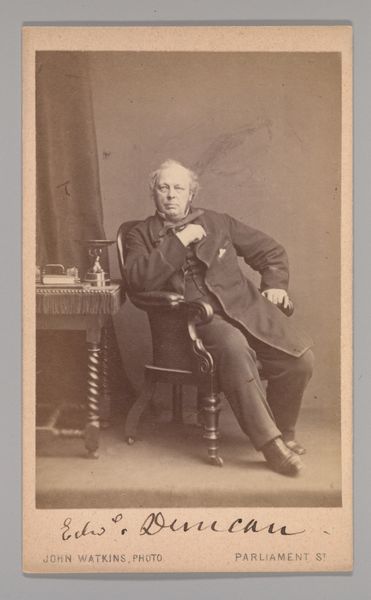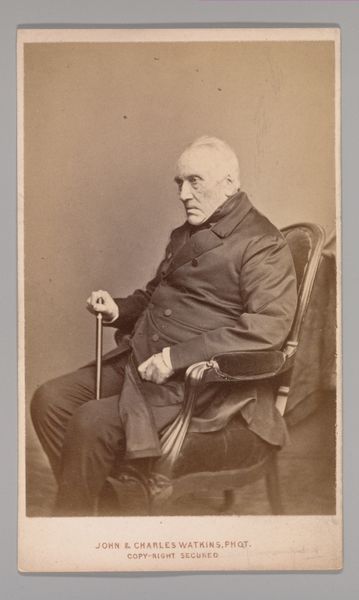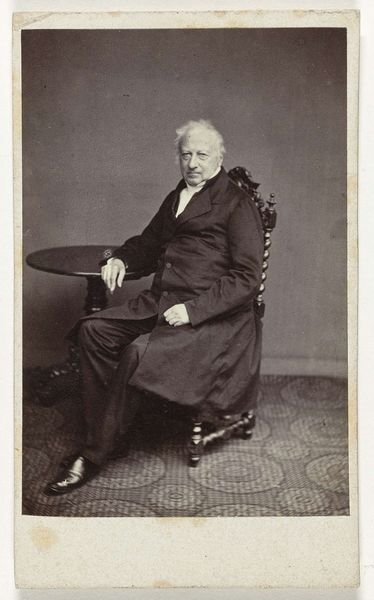
photography, gelatin-silver-print
#
portrait
#
16_19th-century
#
photography
#
gelatin-silver-print
#
realism
Dimensions: height 105 mm, width 63 mm
Copyright: Rijks Museum: Open Domain
This portrait of Dr. Henri Blatin was made using the photographic technique of the time. While the photographer remains unknown, the material reality of this image speaks volumes about the era in which it was created. The sepia tones, the slight blurring, the very format of the card – all of these speak to the rise of photography as a democratizing force. Suddenly, it became possible for people of the middle class, like Dr. Blatin, to have their likeness captured and preserved. The material of the photograph itself, a paper card bearing an image created through a chemical process, was a far cry from the laborious and expensive process of painting a portrait. Consider the contrast: a painted portrait required the skilled labor of an artist, hours of sitting, and a significant financial investment. Photography, on the other hand, offered a relatively quick and affordable alternative, transforming the very notion of portraiture and its accessibility to a wider segment of society. It's a testament to how new materials and processes can reshape social norms and artistic practices, blurring the lines between craft, industry, and art.
Comments
No comments
Be the first to comment and join the conversation on the ultimate creative platform.
